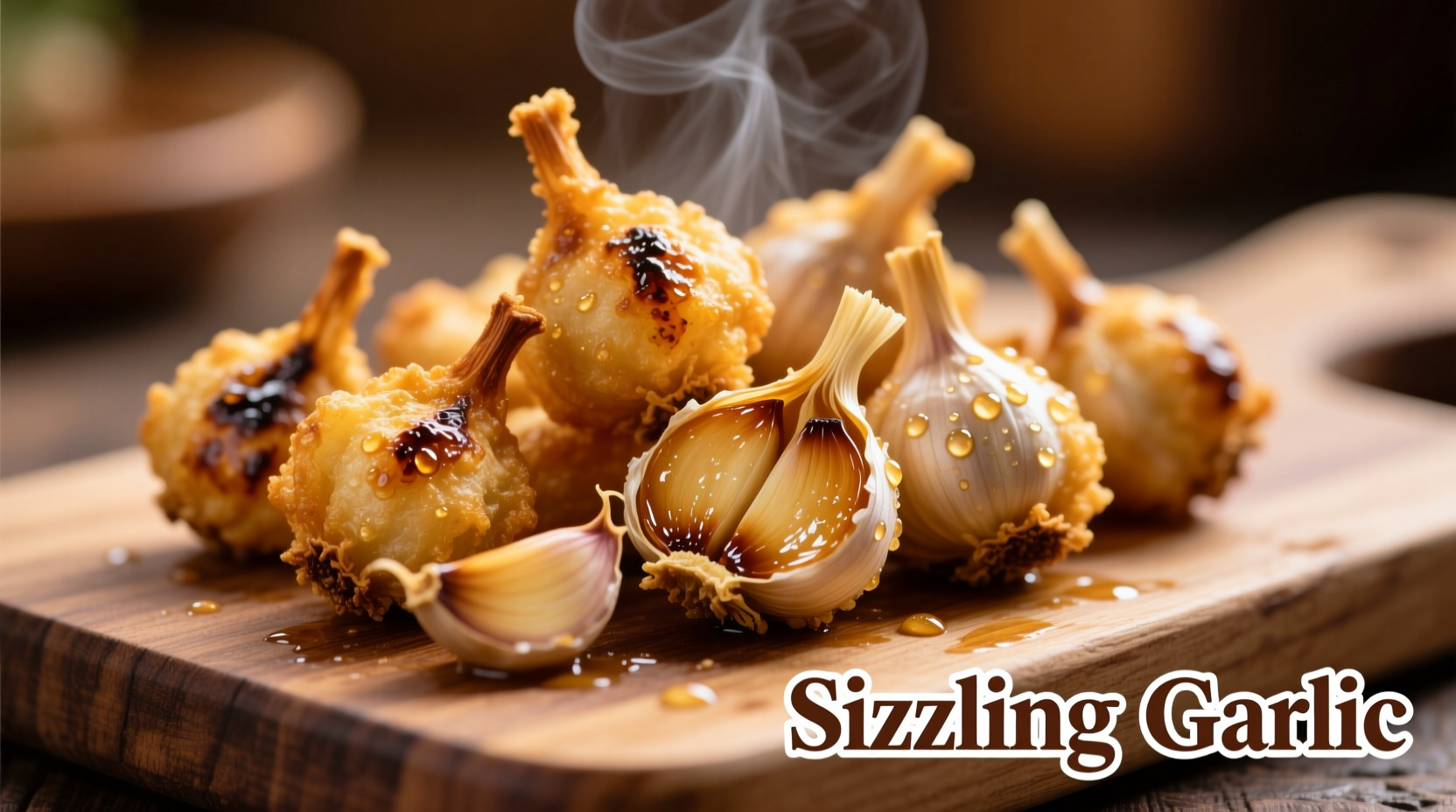Deep fried garlic transforms ordinary garlic cloves into crispy, golden-brown flavor bombs with a sweet, nutty taste that enhances countless dishes. When properly prepared at 320-340°F (160-170°C) for 3-5 minutes, garlic loses its sharp bite while developing complex umami notes, creating a versatile garnish that stays crispy for weeks when stored correctly. This simple technique elevates everything from ramen to roasted vegetables with minimal effort.
The Science Behind Perfectly Fried Garlic
Understanding the transformation process helps you achieve consistent results. As garlic hits hot oil, moisture rapidly evaporates while natural sugars caramelize. The Maillard reaction creates hundreds of new flavor compounds, explaining why properly fried garlic tastes completely different from raw or roasted versions. According to food science research from the University of California, Davis, the critical temperature window for optimal flavor development without bitterness is between 320-340°F (160-170°C).
| Temperature Range | Texture Result | Flavor Profile | Recommended Use |
|---|---|---|---|
| Below 300°F (149°C) | Soggy, oily | Mild, raw garlic taste | Avoid - poor results |
| 320-340°F (160-170°C) | Crispy, light golden | Sweet, nutty, complex | Ideal for all applications |
| Above 360°F (182°C) | Burnt, bitter | Acrid, unpleasant | Discard immediately |
Step-by-Step Preparation Guide
Follow these professional techniques for foolproof results every time:
- Preparation: Thinly slice 4-6 garlic cloves (1/16 inch thick) using a mandoline or sharp knife. Thinner slices create more delicate, lacy textures while thicker slices yield heartier crunch.
- Oil Selection: Use neutral oils with high smoke points like peanut, canola, or avocado oil. Fill a small saucepan with 1 inch of oil and heat to 325°F (163°C) using a reliable thermometer.
- Frying Process: Add garlic in a single layer (work in batches to avoid crowding). Stir constantly with a spider strainer for even cooking. Watch for the color change from white to pale gold - this happens quickly!
- Timing is Critical: Remove garlic when it turns light golden (about 3-4 minutes). Remember: garlic continues cooking from residual heat after removal.
- Draining: Immediately transfer to paper towels or a wire rack. Sprinkle with flaky sea salt while still warm.

Avoid These Common Mistakes
Professional chefs consistently identify three critical errors that ruin deep fried garlic:
- Incorrect oil temperature: Starting too hot burns the outside while leaving the center raw. Use a thermometer - don't guess.
- Overcrowding the pan: Adding too much garlic at once drops the oil temperature, causing soggy results. Fry in small batches.
- Ignoring carryover cooking: Removing garlic just before it reaches perfect color prevents burning from residual heat.
According to culinary research published in the Journal of Food Science, garlic's allicin compounds (responsible for raw garlic's pungency) completely break down at 176°F (80°C), explaining why properly fried garlic lacks the harsh bite of raw versions while developing new flavor compounds.
Culinary Applications Beyond Asian Cuisine
While deep fried garlic shines in Asian dishes like pad thai and ramen, its versatility extends across global cuisines:
- Italian: Sprinkle over pasta carbonara or bruschetta for added crunch
- Middle Eastern: Mix with za'atar for a flavorful dip topping
- Mexican: Garnish black bean soup or tacos for texture contrast
- American: Elevate mashed potatoes or roasted vegetables
- French: Add to compound butter for steak or fish
Storage and Shelf Life Secrets
Proper storage maintains crispness for weeks. After cooling completely, transfer deep fried garlic to an airtight container with a silica gel packet (found in vitamin bottles). Store at room temperature away from light. For extended shelf life (up to 6 weeks), refrigerate in a glass jar. Avoid plastic containers which trap moisture. Never store in the original frying oil - this creates sogginess.
Food safety experts at the USDA confirm that properly dried and stored deep fried garlic presents no microbial risk due to its low moisture content. The critical factor is ensuring complete dryness before storage - any residual moisture leads to spoilage.
Flavor Pairing Recommendations
Deep fried garlic's sweet, nutty profile complements various ingredients:
- Acidic elements: Balances perfectly with citrus, vinegar, or tomatoes
- Creamy bases: Contrasts beautifully with coconut milk, yogurt, or cheese
- Proteins: Enhances chicken, fish, tofu, and eggs without overpowering
- Vegetables: Pairs exceptionally with mushrooms, asparagus, and greens
For maximum impact, add deep fried garlic as a finishing touch rather than cooking it into dishes. The delicate crispness disappears with prolonged heat exposure.











 浙公网安备
33010002000092号
浙公网安备
33010002000092号 浙B2-20120091-4
浙B2-20120091-4